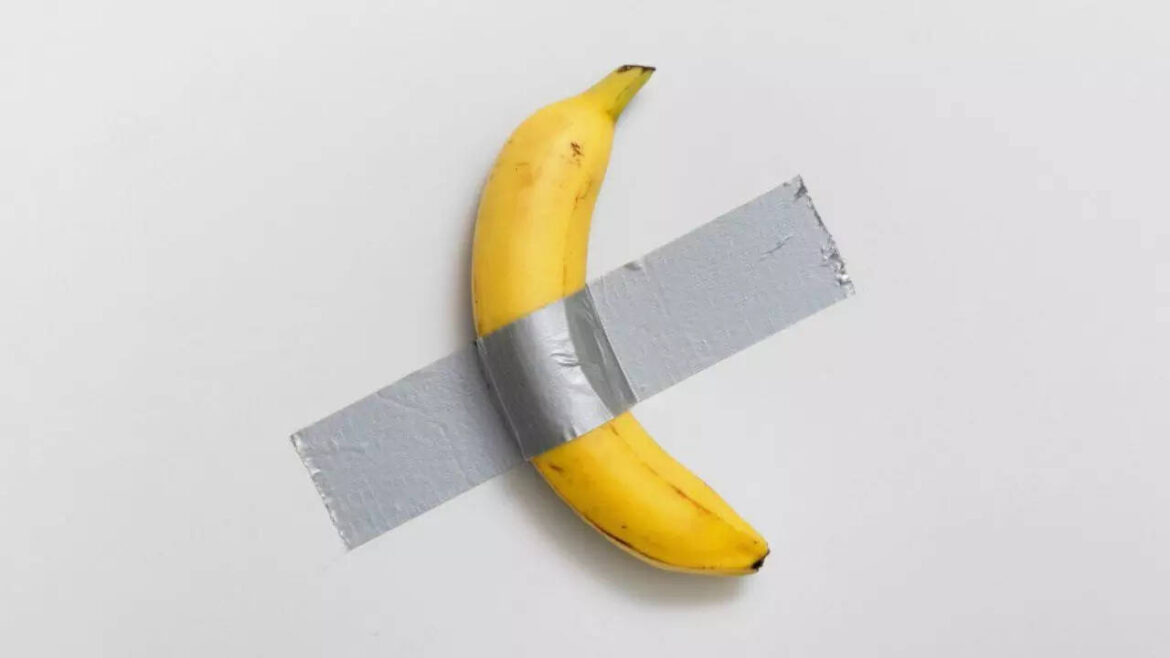
We all love eating bananas, right? Easy to peel and versatile enough for sweet and savoury dishes, this fruit is everyone's favourite. But how much are you ready to spend on a banana? $6 million? Yes, it is correct. Recently, a sale has once again blurred the line between satire and high art. Maurizio Cattelan’s controversial artwork Comedian, a simple banana duct-taped to a wall, sold for an astonishing $6.2 million at Sotheby’s in New York. The piece was first introduced at Art Basel Miami Beach in 2019 and still continues to challenge conventional ideas about value and art.
Also Read: This Bengali Sweet Made With Special Jaggery Was Alia Bhatt's Favourite Pregnancy Binge, Recipe Inside
I’m thrilled to announce that I’ve bought the banana🍌 !!! @SpaceX@Sothebys I am Justin Sun, and I’m excited to share that I have successfully acquired Maurizio Cattelan’s iconic work, Comedian for $6.2 million. This is not just an artwork; it represents a cultural phenomenon… pic.twitter.com/lAj1RE6y0C
— H.E. Justin Sun 🍌 (@justinsuntron) November 21, 2024
Comedian became an instant sensation upon its debut, priced at $120,000. While some praised its bold commentary, others called it absurd. The artwork entered popular culture when performance artist David Datuna famously ate one of the bananas in a self-proclaimed "art performance," stirring debates about the boundaries of artistic expression. This week’s sale saw Comedian set a new benchmark. The buyer, Justin Sun, the founder of the cryptocurrency platform TRON, paid for the piece in cryptocurrency. While the physical banana wasn’t part of the purchase, Sun received a certificate of authenticity and instructions to recreate the installation using a fresh banana and duct tape.
Did You Know This Fruit Is Not Indian?
The humble banana had made it to the tables worldwide, but do you know about its origin? This fruit is believed to have first appeared in the Kuk Valley of Papua New Guinea around 8,000 BCE, making them one of the earliest domesticated plants. From this place of origin, they spread across Southeast Asia and the South Pacific, thriving in the tropics of Australia, Malaysia and Indonesia. As per the historical records, bananas arrived in India around 6,000 BCE, where they became deeply embedded in the culture and mythology.
Cultural Significance In India
In India, bananas hold profound cultural and religious significance. According to the ancient texts, this fruit is a symbolic connection to fertility and abundance. The banana plant is often associated with the deities Vishnu and Shiva, with rituals and festivals celebrating its auspiciousness. Even today, banana stalks adorn Indian wedding stages, symbolizing prosperity and fertility.
Bananas were rare in Europe until explorers like Marco Polo introduced them in the 13th century. By the 19th century, colonial expansion carried bananas to the Americas, where varieties like Gros Michel, or "Big Mike," gained popularity. The U.S. saw its first major banana boom in the 1800s, with the fruit becoming a symbol of exotic indulgence. The 1876 Centennial Exposition in Philadelphia showcased bananas as an exotic marvel, marking their entry into American culture. From there, banana production expanded rapidly in Central America, accelerated by demand and the rise of plantation agriculture.
With over 1,000 varieties worldwide, bananas come in many shapes and sizes, from small, sweet finger bananas to large, seeded ones. They are now cultivated in over 130 countries, with India leading global production. The country grows a quarter of the world’s bananas, with Tamil Nadu, Maharashtra, and Gujarat being major contributors. Indian farmers cultivate both local varieties like Poovan and exotic ones like the Dwarf Cavendish, catering to domestic and export markets.

